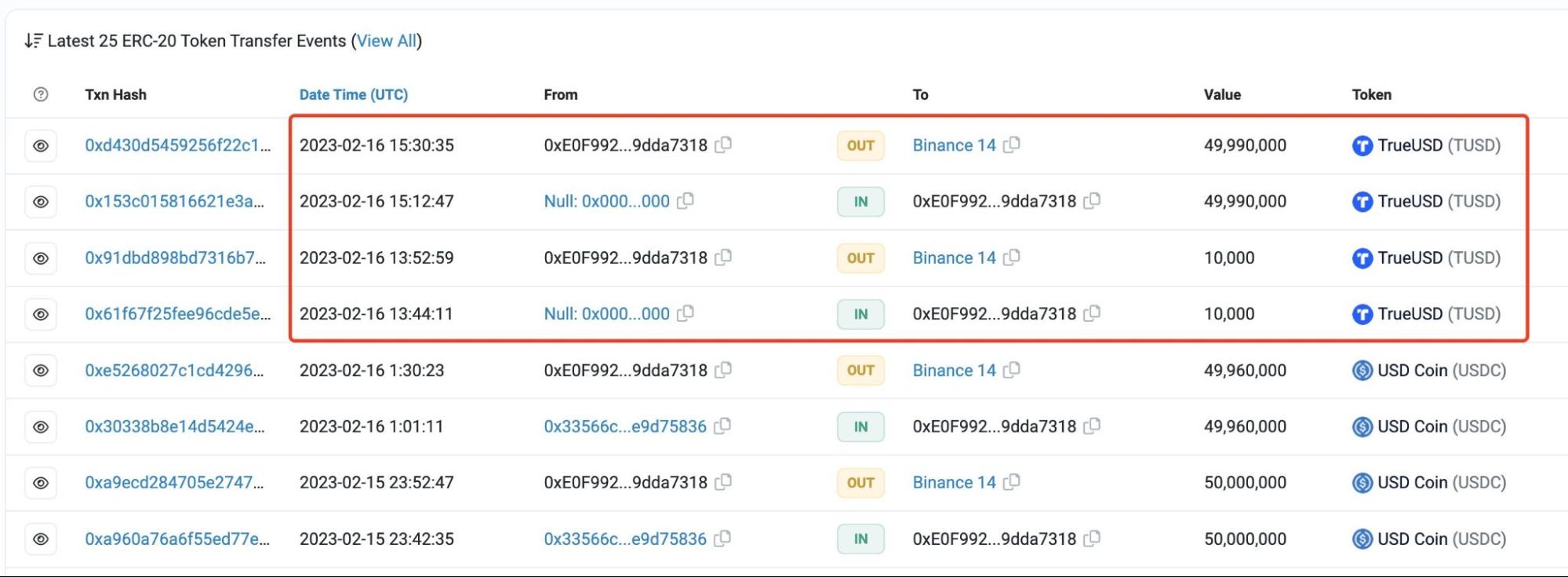- Stablecoins are pegged to the dollar or the fiat currency they are tied to at a 1:1 ratio.
- While traditional stablecoins are backed by collateral systems, algorithmic stablecoins are backed by mathematical collateralization.
- Although the concept of decentralization becomes invalid when there is loyalty to a company, disasters in Terra’s stablecoin can misrepresent decentralization.
According to some experts, it may be difficult for algorithmic stablecoins to rise due to the deep-rooted presence of fiat stablecoins on exchanges.
Binance, BUSD, Paxos Relationship
Binance’s native stablecoin – Binance USD (BUSD) – is the third largest stablecoin pegged to the US dollar, printed by Paxos Trust Company, a blockchain infrastructure platform, through a technology transfer agreement between the two firms.
However, on February 13, the New York Department of Financial Services ordered Paxos to stop printing any new BUSD tokens.
This move came just a few days after the Securities and Exchange Commission claimed that BUSD violated securities laws in a Wells notice.
Binance CEO Changpeng Zhao predicted that regulatory pressures would cause several other crypto businesses to move away from dollar-pegged stablecoins and look to alternative tokens tied to the euro or Japanese yen in the near future.
Zhao’s comments came during a Twitter AMA session where he noted that while gold is a good backing option, most people have their assets in fiat currencies. He acknowledged that the dominance of the US dollar in international markets is one of the main reasons for the popularity of dollar-pegged stablecoins. However, regulatory actions against such assets could pave the way for other stablecoins.
Zhao also spoke about the role of mostly decentralized algorithmic stablecoins, saying that they could play a more significant role in the crypto ecosystem in the future but are inherently riskier than fiat-backed tokens.
Algorithmic Stablecoins Are Tied to Mathematical Systems Instead of Traditional Collateral Systems
Algorithmic stablecoins are not traditionally collateralized; instead, mathematical algorithms are often used in a tokenomics model instead of real-world assets.
Most algorithmic stablecoin projects use a dual token system, with the stablecoin and stablecoin value remaining unchanged, providing a variable asset. To mint a certain stablecoin value, an equal amount of the native token or variable token is burned.
After regulatory actions against BUSD, Binance turned to several alternative stablecoins, including several decentralized stablecoins, to meet its stablecoin-based liquidity needs. Between February 16-24, Binance printed 180 million TrueUSD (TUSD) stablecoins.

Decentralized Stablecoins Have a Bad History
Decentralized stablecoins became popular in the DeFi ecosystem with Dai (DAI) created by MakerDAO. DAI maintains its stability through a smart contract system managed by a DAO. Although DAI remained loyal to its decentralized values, it recently became involved in banking contamination and experienced depeg with USD Coin (USDC) issued by Circle.
While algorithmic stablecoins continue to remain loyal to the decentralized values of the crypto ecosystem, they have a problematic history in real-world applications, especially with the collapse of the Terra ecosystem and algorithmic stablecoin TerraUSD (UST), now renamed TerraClassicUSD (USTC).
Terra’s algorithmic stablecoin was seen as a perfect example of how a decentralized stablecoin could reach the mainstream. However, its depeg and subsequent ecosystem collapse raised doubts about the future of such stablecoins.
Decentralized stablecoins suffered a heavy blow with the Terra story, and the actions of Do Kwon, co-founder of Terraform Labs, further damaged the reputation of such stablecoins. Despite on-chain evidence that he caused a single asset he controlled to depeg and dumped it on the open market for over $450 million, Kwon evaded legal sanctions. Kwon was recently arrested by Montenegrin authorities.
While centralized stablecoins are subject to regulatory oversight, decentralized stablecoins have lost trust, so centralized stablecoins will continue to dominate the crypto market. While decentralized stablecoins hold promise, their real-world applications are questionable, so centralized stablecoins will likely continue to dominate the crypto market.
